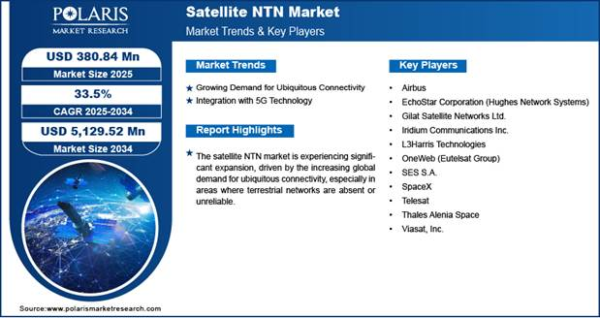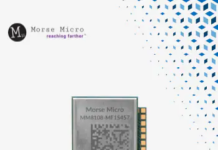How does the internet reach the most remote and hard-to-access places on Earth, where cables and cell towers just can’t keep up? Satellite NTN is breaking barriers by delivering fast, reliable connectivity everywhere, from oceans to mountains and even high in the sky. This game-changing technology ensures no one is out of reach, regardless of their location. Let’s take a closer look at how Satellite NTN is shaping the future of global communication!
What is Satellite NTN?
Satellite NTN (Non-Terrestrial Networks) is a type of communication network that utilizes satellites orbiting the Earth to provide wireless connectivity. While traditional networks rely on ground-based infrastructure, Satellite NTN reaches vast and remote areas where such infrastructure is limited or unavailable. This technology is essential for extending internet access to underserved regions and supporting reliable communication for mobile users, ships, airplanes, and emergency services worldwide.
Interesting Insights
- The global satellite non-terrestrial network (NTN) market was valued at USD 285.81 million in 2024.
- It is projected to grow at a CAGR of 33.5% from 2025 to 2034.
- By 2034, the market is expected to reach a value of USD 5,129.52 million.
Technology Behind Satellite NTN
Satellite NTN relies on a network of LEO, MEO, and GEO satellites to deliver seamless, wide-area connectivity. LEO satellites, in particular, reduce latency and support real-time applications such as video and voice. These systems use advanced technologies such as beamforming, dynamic spectrum allocation, and smart antennas to maintain strong signal quality. Satellite NTN also integrates with terrestrial 5G networks, creating a hybrid system that ensures reliable coverage even in areas with no ground infrastructure.
Key Features of Satellite NTN
Satellite NTN is transforming global connectivity by offering communication capabilities that go far beyond the reach of traditional networks.
Global Coverage
Satellite NTN enables communication in remote, rural, and hard-to-reach areas, across oceans, deserts, mountains, and polar regions, where ground-based networks are unavailable or impractical.
Seamless Mobility Support
Satellite NTN provides continuous connectivity for moving platforms, such as ships, aircraft, and vehicles, whether on land, at sea, or in the air, ensuring uninterrupted operations.
High Resilience and Reliability
These networks offer robust performance during natural disasters, emergencies, or network outages, making them critical for mission-critical communications and public safety.
5G and IoT Integration
Satellite NTN is designed to work alongside terrestrial 5G networks and supports IoT deployments by enabling device connectivity in areas without cellular coverage.
Low Latency with LEO Satellites
The deployment of Low Earth Orbit (LEO) satellite constellations has significantly decreased latency, thereby improving performance for real-time applications such as video calls, streaming, and remote operations.
Applications of Satellite NTN
Satellite NTN is creating new opportunities for global connectivity by reaching areas where traditional networks fall short.
Rural and Remote Connectivity: Provides internet access to underserved and isolated regions where terrestrial networks are unavailable or too costly to deploy.
Maritime and Aviation Communication: Enables continuous communication for ships, cargo vessels, and aircraft, improving navigation, passenger services, and operational safety.
Emergency and Disaster Recovery: Supports rapid deployment of communication services during natural disasters or crises, helping first responders stay connected when ground infrastructure is damaged.
Military and Defense Operations: Delivers secure, resilient communication for defense forces operating in remote or hostile environments, where reliable connectivity is critical.
Internet of Things (IoT): Connects remote sensors and devices in industries such as agriculture, mining, and oil & gas, supporting data collection and automation across vast or hard-to-reach areas.
Connected Vehicles and Smart Mobility: Supports real-time data exchange for vehicles in motion, enhancing navigation, traffic management, and safety in both urban and rural areas.
Satellite NTN Trends
The satellite NTN market is experiencing rapid growth as the demand for seamless, global connectivity continues to rise. Increasing reliance on data-driven applications, 5G expansion, and the need to connect underserved regions are pushing governments and private players to invest heavily in satellite communication infrastructure. The deployment of large-scale LEO satellite constellations by companies including SpaceX and Amazon is reducing latency and improving coverage, making satellite NTN a more viable option for real-time services. Integration with terrestrial 5G networks is also accelerating, creating hybrid systems that promise uninterrupted connectivity across all terrains.
Summing Up
Satellite NTN is reshaping the way the world connects by delivering high-speed, reliable communication to places that traditional networks can’t reach. With its integration into 5G systems, rising demand for remote connectivity, and rapid advancements in satellite technology, the market is set for explosive growth. As more industries, from aviation to agriculture, embrace these networks, Satellite NTN is no longer just a futuristic concept but a vital part of our global communication infrastructure.


















